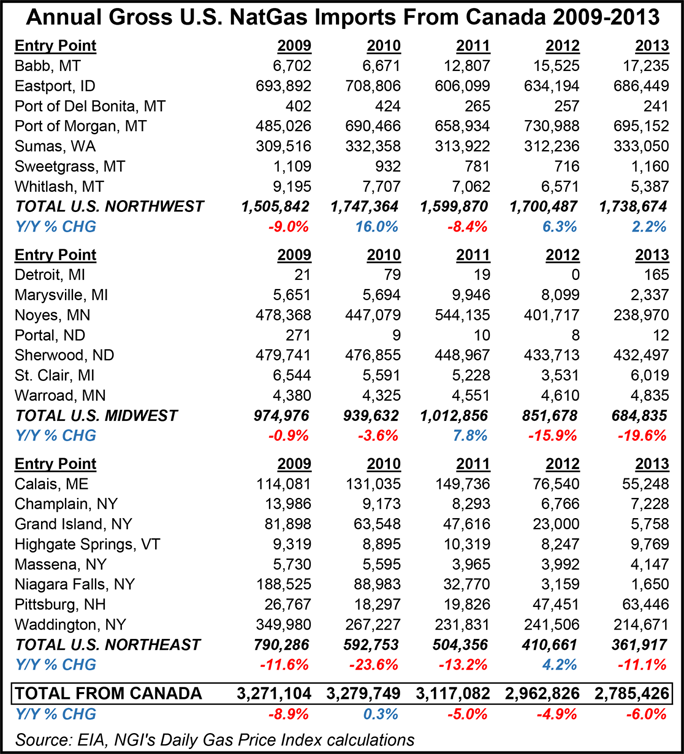Infrastructure | NGI All News Access
Ontario, Quebec to Collaborate on Response to TransCanada’s Pipeline Plan
The Ontario and Quebec governments agreed Friday to collaborate on responding to TransCanada Corp.’s C$13.5 billion (US$12 billion) plan for overhauling the national pipeline network.

The provinces’ Liberal premiers, Kathleen Wynne in Ontario and Philippe Couillard in Quebec, pledged to synchronize work on seven principles for acceptance of projects that cross their territories.
No actions were specified in a communique that the premiers released following a joint meeting of their cabinets in the Ontario capital of Toronto. None of the principles were spelled out.
The premiers said the topics to be covered by the collaboration range from economic benefits of pipelines to safety regulation, environmental effects, project insurance requirements, and carbon emissions blamed for climate change.
Wynne and Couillard made no reference to supply, service and toll issues raised by a demand for a timeout in proceedings on TransCanada’s plan that the country’s biggest gas distribution companies — Union and Enbridge in Ontario, and Gaz Metro in Quebec — filed with the National Energy Board (NEB) last week (see Daily GPI, Nov. 21).
The principles mimic generic demands for safe and clean industry that another Liberal premier, Christy Clark in British Columbia, unveiled with great fanfare in a successful re-election campaign that coincided with regulatory hearings on an Enbridge Inc. project last year.
Virtually no reference to the BC demands — made in an intervention in federal regulatory hearings — has been heard since the election and approval of Enbridge’s Northern Gateway proposal for a new oilsands export conduit from Alberta to tanker docks on the Pacific Coast at Kitimat.
TransCanada did not respond to the statement by Wynne and Couillard, although environmental critics of the pipeline grand design immediately interpreted and applauded the step as a breakthrough for the avowedly green side of energy debates.
The company previously agreed to co-operate with Ontario and Quebec reviews of its plans: the C$12 billion (US$10.7 billion) Energy East partial conversion of TransCanada’s Mainline to oil service, the C$1.5 billion (US$1.3 billion) Eastern Mainline proposal for a new conduit to replace lost gas capacity, and an associated asset transfer.
Alberta oil and gas industry veterans pointed out privately that the premiers’ pact is a potential positive for the project because the co-operative approach means TransCanada will not have to go through separate talks with two provincial cabinets.
The cooperation with Ontario and Quebec is voluntary. In Canada, as in the United States, federal authorities have jurisdiction over projects that cross boundaries. The approval regime, overhauled by efficiency reforms in 2012, provides for joint and swift reviews by the watchdogs in charge, the NEB and the Canadian Environmental Assessment Agency.
Recent natural gas imports from Canada into the U.S. help illustrate the changes of gas flows along the TransCanada Mainline system. Import activity in the western portion of the U.S. grew at a cumulative annual growth rate (CAGR) of 1.0% between 2009 and 2013. However, gas imports from Canada into the U.S. Midwest exhibited a negative 7.0% CAGR during that period, and imports into the U.S. Northeast fared even worse, falling at a 17.5% annual rate during those five years.
© 2024 Natural Gas Intelligence. All rights reserved.
ISSN © 1532-1231 | ISSN © 2577-9877 |
